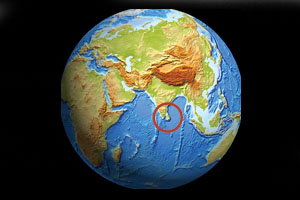USMEF: Sri Lanka a potential new target for US pork

While US pork and beef are being exported to more than 100 countries across the globe, some untapped markets still remain.
USMEF is looking to capitalise on these opportunities, especially those markets in which improving economic and political circumstances have created new potential for trade.
One example is Sri Lanka, where USMEF recently conducted an in-depth market evaluation using funding provided through the USDA Market Access Program (MAP). Sri Lanka is an island nation off the southeastern coast of India with a population of more than 20 million. Until 2009, it was plagued by civil war and ongoing political conflict. The island was also devastated by a deadly tsunami in 2004, which killed more than 30,000 people and displaced 1.5 million more. But recently Sri Lankans have enjoyed a much more peaceful existence, which has led to economic growth and a revitalized tourism sector. Sri Lanka’s GDP grew by more than 8 percent last year, to about $60 billion.
Joel Haggard, USMEF senior vice president for the Asia Pacific region, points out that Sri Lanka (formerly known as Ceylon) was once a leading tourist destination and is looking to return to this status. Sri Lanka has been closed to U.S. beef since 2003, but this issue may be revisited soon in light of the improving economic climate. Haggard says opportunities also exist for U.S. pork, especially pork cuts used for further processing.







